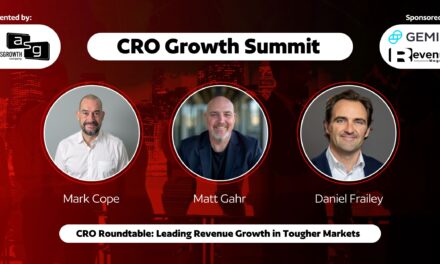
The Power of Three: Why Alignment, Focus, and Communication Are the Hidden Engines of Scale

I carry a quiet distinction in today’s business world—I’m often the oldest person in the room. What once might have felt like an awkward truth has turned into something I wear with pride. Not because of titles or tenure, but because great people and lessons learned from decades of doing the work—winning some, failing more, and learning through every experience.
After a career shaped by time at companies like ADP, Siebel, Oracle, and Cast Iron Systems, I’ve seen enough to know that success in business doesn’t come from the latest frameworks or buzzwords. It doesn’t come from viral TED Talks, a Guru or well-branded “Master Classes.” The difference between high-growth / scale businesses and those that stall or fade can usually be traced to how well they manage the key aspects of the mission: Alignment, Focus, Communication.
Let’s work backwards.
Alignment: Everyone, Everywhere, Pulling Together
At Siebel Systems, we helped define the CRM space. At Cast Iron, we pioneered low-code integration. Oracle? It hardly needs an introduction—dominant across databases, applications, and now the cloud. Despite wildly different missions and markets, all three companies had one defining trait in common: organizational alignment.
Alignment isn’t about slogans on posters. It’s about every person—from the boardroom to the breakroom—understanding the mission, owning the vision, and knowing precisely how their work connects to both. It means engineering, sales, HR, marketing, and leadership all rowing in the same direction.
In well-aligned companies, ambiguity disappears. If someone strays off course, it’s quickly obvious which allows colleagues to course-correct together. Expectations are clear. Decisions are faster. Noise is minimal.
Focus: The Cure for Shiny Object Syndrome
Once alignment is in place, focus becomes the accelerant. Teams that understand the mission don’t waste time debating it. Instead, they invest energy into how best to execute it.
I’ve watched this play out when someone floats a promising new feature or suggests entering a flashy new market. Without focus, the temptation is strong to say, “Let’s do it all.” But the best leaders and teams ask a different question: “Does this advance our mission, or distract from it?”
Focus requires discipline. It means saying no—often to very good ideas. But it also means every “yes” becomes more powerful. The product roadmap and Go To Market process sharpens. Messaging becomes magnetic. Customers feel it. Investors feel it. Your team does too. Those companies with “swagger”are also the companies with the greatest focus.
Communication: The Most Fragile Link
Of the three, communication is the hardest to master—and the first to break.
In today’s always-on world, we’re surrounded by tools: Slack, text, email, Zoom, social media, and the ancient art of face-to-face conversation. But more communication channels have not led to better communication. Misunderstandings are everywhere! People fill in gaps with assumptions. Leaders think they’ve been clear, only to find that a team went in a completely different direction.
When communication fails, focus drifts. Alignment dissolves. Small issues become big issues and then fracture into politics, gossip, and attrition.
The solution isn’t radical transparency or broadcasting every data point. Not everyone needs or wants to understand EBITDA margins or backlog remediation. Over-communicating the wrong things only confuses.
Instead, leaders need to practice purposeful communication. Clear. Contextual. Repeated, often. Not as a KPI, but as part of the cultural fabric. It’s our job to ensure every employee hears what matters and why it matters—to them.
A Leadership Imperative
These three principles—alignment, focus, communication—shouldn’t live in your values slide deck or as line items in a comp plan. They should be embedded into how you operate, day in and day out.
Not as aspirational fluff, like “We treat our customers like family,” but as real, gritty operational truth:
“We make every decision through the lens of alignment. We protect focus like it’s oxygen. We communicate intentionally and often, because it’s the glue that holds everything together.”
Great companies aren’t built by accident. They are engineered through discipline. The most enduring ones don’t chase trends; they double down on fundamentals.
The good news? The fundamentals haven’t changed.
You don’t need a Master Class. You just need to master the basics.
And that begins with three words.
Want to contribute to this conversation or share your experience with alignment, focus, and communication? Let’s connect – mike@calmoceansales.com
































